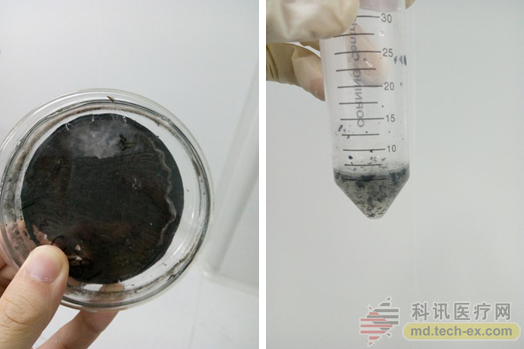Are you still counting the fungus spores? ——A new automatic detection scheme
Release date: 2016-05-20
At present, the count of filamentous fungi is mainly based on the number of spores. By measuring the number of spores, it is possible to compare the growth conditions of the strains under different culture conditions, and optimize the composition of the medium, temperature, pH and the like. In addition, spore count is the basis for studying its germination rate.
The method commonly used in the laboratory to count the number of fungal spores is the blood cell counting method and the plate colony counting method, and the process is time consuming and laborious, and the operation error between different people is large. The emergence of the new JIMBIO CC cell counter can replace such methods, improve counting efficiency, and give accurate and objective counting results.
1. Materials and methods
1.1 Materials
Strain: Curvularia lunata
Medium: potato 200 g; sucrose 20 g; agar 20 g; water 1000 ml.
1.2 Preparation of spore suspension:
1.2.1 Add about 5 ml of physiological saline containing 0.05% Tween 80 to a 50 ml centrifuge tube.
1.2.2 Use a pipette tip to scrape the spores from the solid medium.
1.2.3 After violent shaking, filter twice with eight layers of gauze into a 15 ml centrifuge tube (with 5 ml in the middle)
Wash with 0.05% Tween 80 in saline).
1.2.4 can be connected to a small EP tube count, the spores are easy to adsorb the tube wall, and look at the blown well.


2. Results and analysis
Figure 1. Curvularia sp. suspension count

Table 1 Counter counting results compared with blood cell counting plates

As can be seen from the above chart, the counter measured the average diameter of the particles of about 10 μm, and the concentration was high, which was equivalent to the actual spore size. In comparison with the counting plate results, from the concentration gradient of 0.5*10^6 to 2.0*10^6, the technical results of the counter are comparable to those of the hemocytometer, and the numerical fluctuation is small.
Because there will be a small amount of fine hyphae or debris (as at 5 μm), it is small compared to the overall count, negligible or manual selection correction.
This count can help to accurately control the inoculation amount. If the spore germination rate is to be calculated, only after the spores are germinated, another filtration (removing the residual spores on the gauze), and counting the remaining spores, the germination rate can be calculated. .
Source: Bio Valley
Jiangsu Asbao Medical Technology Co., Ltd. , https://www.iigloves.com